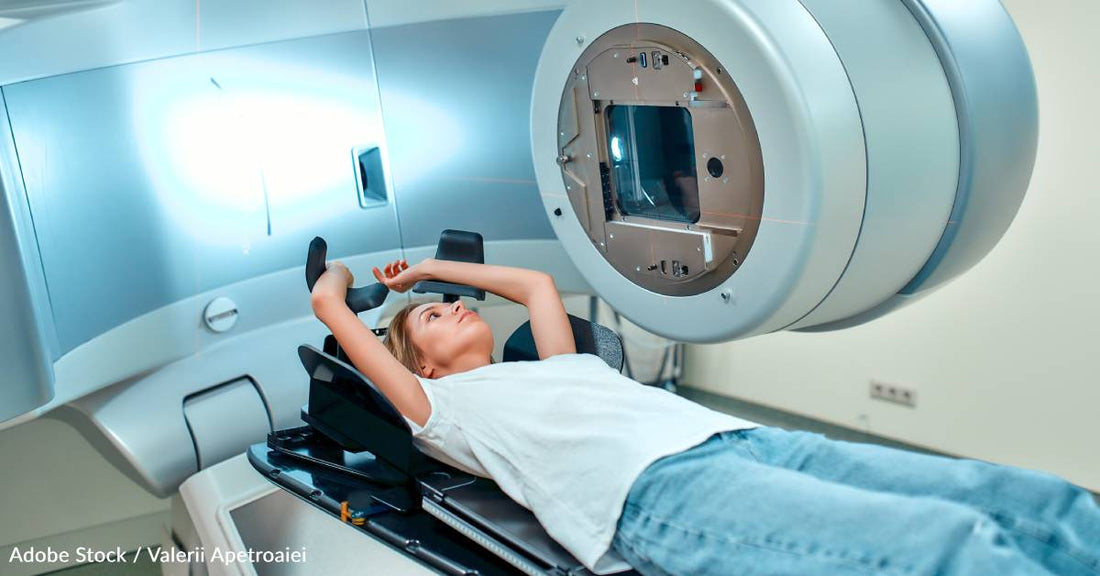Shortening Radiation Course is Safe for Patients Planning Breast Reconstruction, Study Finds
Michelle Milliken
Adobe Stock / Valerii Apetroaiei
Radiation therapy post-mastectomy aims to prevent breast cancer recurrence, but it can also be fairly involved, lasting a bit over a month with daily treatments during weekdays. This can be difficult for some patients, especially those who live far from treatment centers. Recent research has suggested a shorter course of radiation may still be as effective, and a new study looked into whether that was the case for a specific type of patient.
The Phase III CHARM trial, the findings of which were recently presented at the American Society for Radiation Oncology (ASTRO) Annual Meeting, investigated how shortening radiation therapy from five to three weeks impacted patients planning to undergo reconstructive surgery.

The team behind the study says that past research on shorter radiation courses has tended to omit this type of patient, over concerns that side effects may cause complications for reconstruction. The goal of this current study was to see if these patients can take advantage of a shorter schedule, too, which can be more convenient and cost less time and money.
Dr. Matthew Poppe, the trial’s lead researcher and professor of radiation oncology at the University of Utah, says, “The majority of my patients live two to five hours away from our cancer hospital. Taking five or six weeks of time, uprooting your family or leaving your business behind to move closer to the cancer center — even though it’s important for survival, it can be out of reach for a lot of patients. When I tell people they can do three weeks of radiation instead of six weeks, you can see their relief.”
To see if patients planning reconstruction could also safely take advantage of this schedule, the trial enrolled 898 invasive breast cancer patients from more than 200 cancer centers in the U.S. and Canada. Their median age was 46 and most had also undergone chemo. The participants were either given 25 radiation treatment sessions over five weeks or 16 over three weeks.
By the study’s end, 650 participants had completed reconstructive surgery, and researchers looked for complications like wound healing, needing to return to the hospital, unplanned re-operations, or reconstruction failure. Within two years of the surgery, the rates of these complications were similar across both groups: 14% of patients in the shorter course, compared with 12% in the standard length course.

Dr. Atif Khan, the study’s senior author and radiation oncologist at Memorial Sloan Kettering Cancer Center, says, “We expected a complication rate of 25 to 35% based on prior, single institution studies of patients who received reconstructive surgery and radiation. It was very exciting to see a complication rate that was nearly half what we anticipated.”
Further, the findings showed that recurrence rates weren’t all that different, either. Three years later, 1.5% of the patients who received three weeks of treatments had experienced recurrence, compared with 2.3% of the standard treatment group. According to the researchers, recurrence post-mastectomy for patients who don’t undergo radiation is between 20 and 30%.
The team hopes their findings encourage providers and clinics to shift toward a shorter radiation course, which may improve patients’ quality of life and be more accessible for many.
Dr. Khan says, “Radiation therapy after mastectomy saves lives. Patients shouldn’t have to choose between radiation or no radiation based on their desire for reconstruction, or because they can't take six weeks out of their lives.”
You can read more about the study’s findings here.
Michelle has a journalism degree and has spent more than seven years working in broadcast news. She's also been known to write some silly stuff for humor websites. When she's not writing, she's probably getting lost in nature, with a fully-stocked backpack, of course.




















